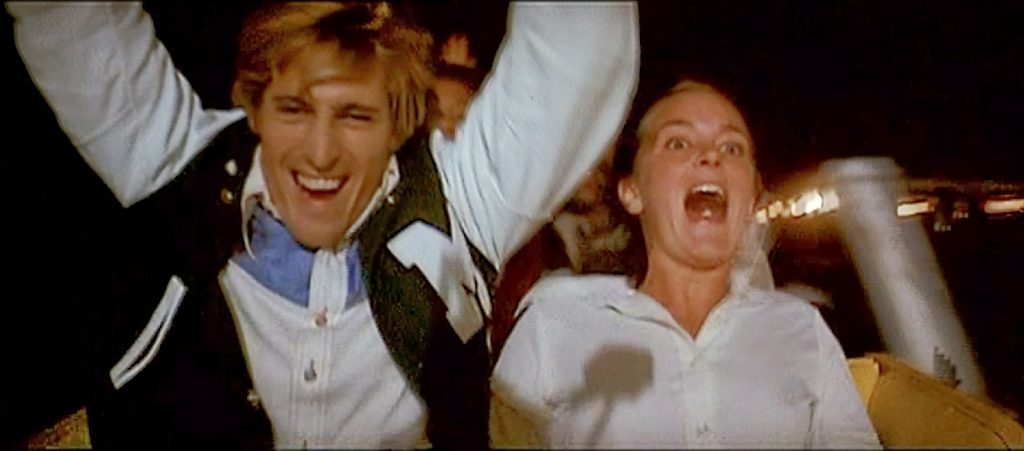Rollercoaster (1977)

Yet another attempt during the 1970s at a disaster film (although not a purist one), Rollercoaster isn’t the worst of its genre, but it’s quite a sizable distance from being the best. What it has is plenty of rollercoaster footage; what it lacks is plotting and a well-developed story. At two full hours in length, James Goldstone’s film is an endurance test for people with short-to-moderate attention spans, especially as most of the so-called tense amusement park scenarios are ridiculously padded in order to stretch out the story to feature-length. You won’t confuse this monotonous excuse for a suspense flick with the experience of an actual rollercoaster, as this is as dull and slow as a thriller could ever be and still be called one.
Timothy Bottoms plays the crazed terrorist with no name, out to extort a million dollars from the heads of amusement parks after he has discovered lax security measures at every one of them. He places explosives on the tracks of the country’s biggest rollercoasters and sets them off with a remote trigger, threatening to do more damage unless his demands are met. George Segal plays detective Harry Calder, who seems to be a little sharper than the rest of the investigators in knowing just what makes the terrorist tick. He becomes the main liaison in the case, although by being front and center, he also puts himself in harm’s way all too often.
Like many other disaster films that came before it, Rollercoaster features an all-star cast, although in this case, it’s not quite as impressive as most. With the exception of the popular 1970s star Segal, only Henry Fonda might claim to enhance the box office draw, and he’s barely in the film. Smaller roles would go to a couple of actors that would be bigger names in the future, such as a very young Helen Hunt as Harry’s daughter and a throwaway bit part for Steve Guttenberg, marking the first big screen appearance for both.
At the time of its release, much was being made of the film appearing in “Sensurround” in select theaters, whereby heavy bass speakers were placed to simulate theater-shaking, seat-rumbling sound during the explosive scenes. While this proves to be a needless gimmick, judging by the boredom-inducing finished product, I’ll wager that this massive jolt to the audience was used mostly as a means to keep theater patrons awake.
From Lalo Schifrin’s lackluster and repetitive Psycho–like scoring, to the god-awful performance late in the film by the glam rock/new wave artists, Sparks (any ideas on how to get the incessant chorus from “Big Boy” out of my head?), this is a hard movie to endure on just an auditory level alone. The rollercoaster scenes do merit some interest to amusement park historians, but they aren’t enough to be truly engaging to most everyone else. Despite a few catastrophes, only one happens to be shown on-screen, and the obviousness of the dummies used in place of humans doesn’t allow this would-be disaster to pass the snicker test.
Rollercoaster is a dated curiosity released at the tail-end of a particularly bad subgenre of films that ran their course out throughout the 1970s. It’s recommended mostly to 1970s revivalists and nostalgia buffs, although there are a few zealous critics out there that maintain its merit as a sleeper suspense vehicle. Obviously, I don’t rank among them. Rollercoaster is one tediously long ride that will make many wish they had gotten off long before the last drawn-out, repetitive go around.
Qwipster’s rating: D
MPAA Rated: PG for violence and language
Running Time: 119 min.
Cast: George Segal, Timothy Bottoms, Richard Widmark, Henry Fonda, Harry Guardino, Susan Strasberg, Helen Hunt, Sparks, Charlie Tuna (cameo), Steve Guttenberg (cameo)
Director: James Goldstone
Screenplay: Sanford Sheldon, Richard Levinson, William Link
